Did you know that Carcassonne has sold over 10 million copies worldwide? This staggering number underscores the game’s widespread appeal and the strategic fun it offers. For those new to the game, understanding how to play Carcassonne is an exciting journey into a world of mediaeval cities, roads, and fields. This beginner’s guide will help you navigate the basics and develop a deeper appreciation for the game’s strategic depth.
In Carcassonne, players build a picturesque, mediaeval landscape one tile at a time. Each tile might feature roads, cities, monasteries, or fields, and how you place these tiles impacts your strategy and points. Your goal is to amass the most points by effectively utilising tiles and meeples, the adorable little figures that represent followers in the game.
By learning to place tiles strategically and manage your meeples wisely, you can maximise your points through completed territories like roads and cities. Adding to the excitement, endgame scoring includes bonus points, rewarding those who think several moves ahead.
Whether you’re playing Carcassonne for beginners or looking to refine your strategies as an adult, this guide will walk you through the essentials. Read on and discover how mastering these skills can lead to Carcassonne success!
Overview of Carcassonne
Carcassonne is a board game that draws inspiration from the mediaeval fortified town of Carcassonne in France. This game revolves around creating a landscape by placing tiles and strategically utilising meeples to control various territories.
Introduction to the Game
Central to the Carcassonne rules is the concept of managing land tiles and meeples. Players work towards expanding territories by adding tiles and strategically placing meeples to claim features such as cities, roads, and monasteries. Wondering, is carcassonne easy to play? The answer lies in its simple yet engaging mechanics.
Objective
In Carcassonne, the primary objective is to amass the highest number of points by claiming and completing landscape features. Points are awarded through cleverly placed tiles and the effective deployment of meeples. But how do you play the game carcassonne to win? It’s all about strategic thinking and foresight.
Game Components
Understanding Carcassonne’s components can enhance your gameplay experience. The fundamental elements include:
- Tiles: Each tile features landscapes like cities, roads, and monasteries.
- Meeples: Small figures used to claim various features.
- Scoreboard: Tracks players’ points throughout the game.
Setting Up Carcassonne
Summary: Properly setting up Carcassonne is essential for a seamless start to the game. This involves a few key steps that ensure all players are ready to jump into the fun. Below, we outline the initial setup process, which is fundamental to any Carcassonne game guide. The steps include initial tile and meeple distribution, creating tile stacks, and placing the scoreboard.
Initial Tile and Meeples
Every Carcassonne game begins with the initial tile, which is distinct and marked differently from the rest. This tile is placed in the centre of the playing area. Each player then receives a set of meeples, which are small, person-shaped pieces. Typically, you’ll have around seven meeples to play with. This initial setup ensures that players can start claiming territories right from the first round.
Creating Tile Stacks
The remaining land tiles should be shuffled thoroughly to ensure randomness. These tiles are then divided into several stacks, placed within easy reach of all players. Ensuring equitable access to tiles helps in a smoother gameplay experience. Wondering, “how long does a game of Carcassonne take?” Typically, a well-organised setup can keep the game within the range of 30 to 90 minutes, depending on the number of players and their familiarity with the game.
Scoreboard Placement
The scoreboard is a critical component that should be placed in a visible and accessible location. This allows all players to easily track their points as they build roads, cities, and other features. The scoreboard helps maintain a transparent score tally throughout the game session. One might ask, “do you need a car in Carcassonne?” While not necessary for the game, exploring the historical city of Carcassonne could be a delightful experience, and renting a car might enhance your visit.
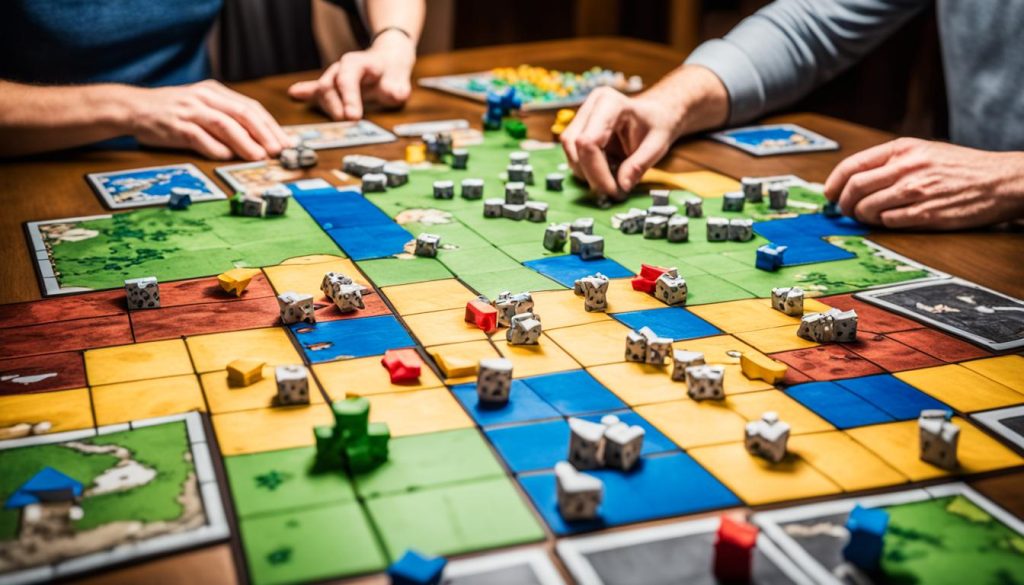
How to Play Carcassonne?
Learning how to play Carcassonne like a pro involves mastering the core mechanics of drawing and placing tiles to build a mediaeval landscape. Each turn, players draw a tile and position it adjacent to tiles already on the board, ensuring that features such as roads and cities align perfectly. This strategic placement forms the foundation of effective gameplay and extends potential scoring opportunities.
Utilising meeples is another critical component covered in any recommended strategy guide Carcassonne. Players allocate meeples to claim specific features on newly placed tiles, acting as their mini-avatars—knights, thieves, monks, and farmers. Claiming these features before competitors can provide a significant edge in points accumulation.
Strategic decision-making plays a pivotal role in optimising your moves. Experienced players often prioritise tiles that will help them swiftly complete cities or roads, thus freeing up their meeples for future rounds. One of the most valuable carcassonne strategy tips is to stymie your opponents’ plans by cleverly placing tiles that make it difficult for them to complete their own features.
Resource management cannot be overstated in a game focused on strategic depth. Keeping an eye on the number of available meeples and judiciously deciding when to retrieve and redeploy them can be pivotal to winning. Understanding the delicate balance between expansion and consolidation is instrumental in maximising your score.
Drawing and Placing Tiles
The process of drawing and placing tiles is a fundamental aspect of playing Carcassonne. Understanding this phase well can significantly enhance your gameplay, allowing you to optimise your score and thwart your opponents’ strategies effectively.
Drawing Phase Explained
Each player starts their turn by drawing one tile from the stack. This new tile should be placed adjacent to any tile already on the board, further expanding the mediaeval landscape. The tile must match the existing landscape features on its adjacent sides. For example, a tile with a road should connect to another road tile. Do all sides have to match in Carcassonne? Yes, ensuring that landscape features align correctly is a strict requirement of the game.
Placing Tiles Effectively
When placing tiles, strategic thinking is crucial. Here are some tile placement tips for Carcassonne:
- Connect and expand: Build upon existing features like cities and roads to score points efficiently.
- Block opponents: Place tiles to block your opponents from completing their features.
- Open spaces: Leave potential spots for future tiles, enabling more strategic placements in subsequent turns.
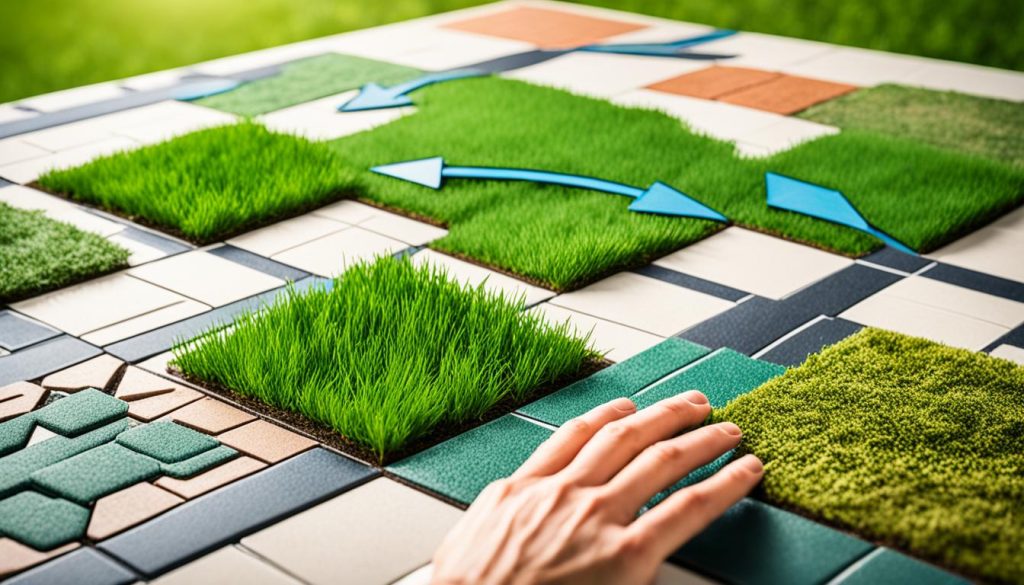
Matching Landscape Features
Consistency in matching landscape features is critical. Roads must connect with other roads, cities should adjoin other city features, and fields must flow seamlessly. This meticulous matching ensures a coherent landscape and maximises scoring opportunities.
The process of matching can be summarised as follows:
| Landscape Feature | Matching Criteria |
|---|---|
| Roads | Adjacent tiles must continue the road. |
| Cities | City tiles must connect to previous city segments. |
| Fields | Fields should align and extend across tiles. |
| Monasteries | Surrounding tiles must be placed to complete the monastery. |
Using these tile placement tips for Carcassonne and ensuring all sides match correctly can greatly affect your game strategy, making your positions stronger and your play more competitive.
Using and Managing Meeples
Meeples in Carcassonne are versatile pieces that can take on various roles depending on where they are placed on the board. Understanding the types of meeples and how to use them strategically is key to gaining the upper hand in the game. Below, we delve into the different roles of meeples, the tactics for their placement, and the best practices for retrieving them at optimal times.
Types of Meeples and Their Roles
In Carcassonne, meeples can assume diverse roles on the tiles you place. These roles include:
- Travellers – Positioned on roads to earn points when the roads are completed.
- Knights – Deployed in cities to accrue points as the city expands and is completed.
- Monks – Placed in monasteries to gather points once the monastery is surrounded by tiles.
Strategically Placing Meeples
Knowing how do you win at Carcassonne? heavily relies on mastering the art of placing meeples. Here are some winning tactics for Carcassonne that can elevate your game:
- Always aim to place meeples on tiles that have high likelihoods of being completed soon. This ensures a steady flow of points.
- When deploying a knight in a city, consider cities with potential for high score due to more tiles and coats of arms.
- Strategically block opponents by positioning your meeples to prevent them from completing their roads or cities.
Retrieving Meeples
Timely retrieval of meeples is as critical as their placement. Retrieving a meeple allows you to reuse it for claiming new features, thereby accumulating more points. Here’s how to effectively manage this:
- Focus on completing smaller features early in the game to quickly retrieve your meeples and reallocate them.
- Plan ahead to ensure you always have a meeple available for high-scoring opportunities that may arise later in the game.
- Monitor your opponents’ progress to anticipate future moves and make your meeples available to counteract their strategies.
By effectively using and managing your meeples, you can significantly bolster your score and devise advanced winning tactics for Carcassonne, ensuring your path to victory.
Scoring Points in Carcassonne
Understanding how points are scored in Carcassonne is crucial for mastering this captivating board game. Players gain points by completing various features on their tiles, with the rules governing scoring being specific and strategic.
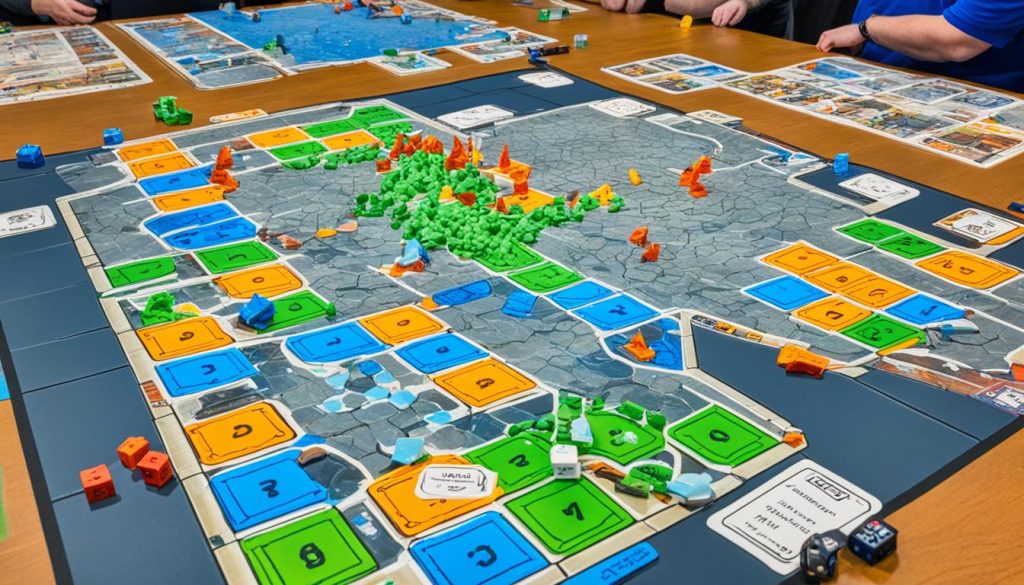
Roads and Cities
In Carcassonne, roads earn players one point per tile when completed. A completed road is a series of connecting road tiles with endpoints, such as villages. Cities, on the other hand, offer two points per tile once enclosed completely. Certain city tiles display coats of arms, which grant bonus points when enclosed within the city. This aspect of scoring in Carcassonne requires tactical acumen to optimise point accrual.
Monasteries and Fields
Monasteries are valuable features, rewarding players with one point for the monastery itself and an additional point for each surrounding tile, up to a total of nine points when fully surrounded. Fields, represented by farmers, score points during the final scoring phase. Farmers accrue points based on completed cities adjacent to their field, making field area control a strategic element.
Final Scoring
Final scoring in Carcassonne tallies points from incomplete features and farmers. While roads, cities, and monasteries earn partial points if unfinished, fields continue to provide significant endgame points, as farmers score per city adjacent to their field. Understanding what is the final scoring in Carcassonne is essential to plan effectively throughout the game, ensuring well-rounded strategic play.
Advanced Strategies for Carcassonne
To master advanced strategies in Carcassonne, players must focus on carving out advantageous positions by influencing both their own and their opponents’ moves. Subtle tile placements can significantly complicate an opponent’s progress, creating opportunities to maximise personal scoring potential while hindering others. By anticipating how the board will evolve, you can effectively block competitors and steer the game to your advantage.
One core strategy involves leveraging the geometry of the board. Understanding the spatial relationships between tiles can turn seemingly inconsequential moves into game-defining actions. For instance, creating strategic gaps or extending features that opponents cannot easily complete can yield substantial long-term benefits. Additionally, capitalising on favourable tile draws by placing them in positions that bolster your existing features while obstructing your opponents is crucial.
A focused approach towards endgame scoring is essential. Often, the final tiles can unearth hidden opportunities for significant point gains, especially when involving fields. By placing tiles that connect multiple cities to a single field, players can dramatically boost their scores at the end of the game, illustrating a practical case of leveraging the geometry of the board.
Here is a comparative overview of common and advanced strategies, highlighting the benefits of each:
| Strategy Type | Approach | Benefits |
|---|---|---|
| Common | Focus on completing individual features | Quick point gains, straightforward gameplay |
| Advanced | Carving out advantageous positions and leveraging the geometry of the board | Higher long-term scores, control over opponents’ moves |
Playing with Carcassonne Expansions
Introducing expansions to Carcassonne can significantly diversify the gaming experience, adding fresh challenges and strategic opportunities. This guide delves into some of the popular expansions and provides insight into how they transform gameplay, along with tips for successful integration.
Popular Expansions
Several renowned expansions can enhance your Carcassonne experience. Among these are:
- The River: Adds a river tile sequence, creating a new dynamic start to the game.
- Traders & Builders: Introduces trade goods and a builder meeple, adding layers of strategy.
- The Princess and the Dragon: Features a dragon that removes meeples, complicating tile placement.
- Inns & Cathedrals: Provides significant scoring opportunities and a more competitive edge.
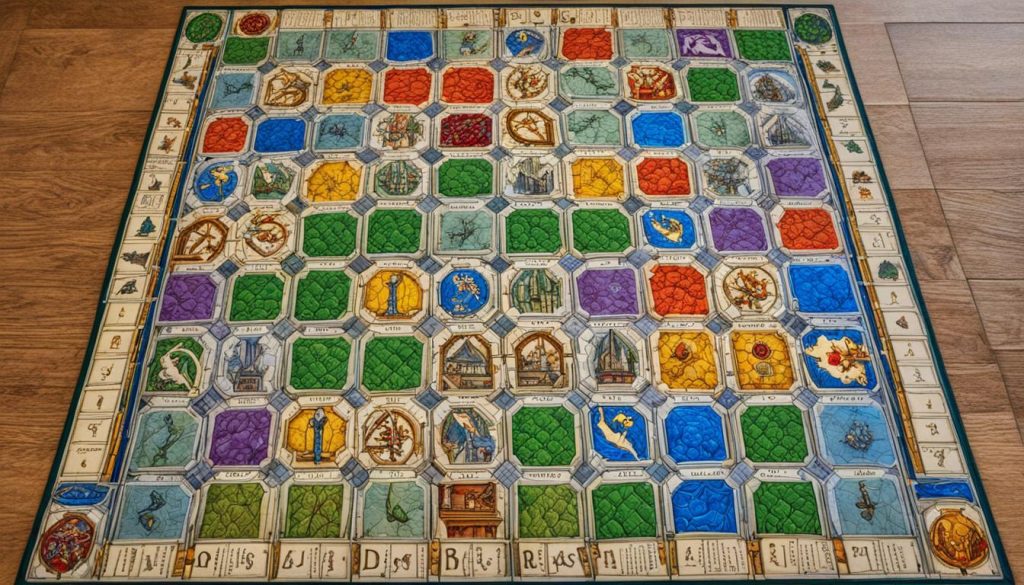
How Expansions Change Gameplay
Each expansion uniquely alters the gameplay, compelling players to adapt and refine their strategies. For example, the Traders & Builders expansion introduces trade goods, which diversify scoring methods, while the presence of the dragon in The Princess and the Dragon adds an element of risk, making it necessary to re-evaluate when and where to place meeples. Furthermore, the expansion Inns & Cathedrals offers new ways to earn points, encouraging bolder moves.
Integration Tips
Successfully integrating expansions requires a keen understanding of the new rules and how they interact with the base game. Here are some practical tips:
- Familiarise Yourself with New Mechanics: Take the time to thoroughly understand each expansion’s rules. This is essential for seamlessly incorporating them into your strategy.
- Balancing Expansion Features: Mix and match expansions to find a balance that best suits your group’s play style. Some expansions, like Inns & Cathedrals, can increase competitive play, while others, like The River, provide a creative starting point.
- Start Small: Introduce one expansion at a time, allowing players to adjust and master new elements before adding more. This gradual integration helps maintain game flow and enjoyment.
Beginner Tips for Carcassonne
Starting with Carcassonne can be a rewarding experience once you grasp the fundamental strategies and avoid typical errors common among novices. Here are some essential tips to help you get started successfully.
Tips for First-Time Players
As a beginner, focusing on basic strategies in Carcassonne will set the groundwork for effective gameplay. Begin by completing smaller features such as roads and cities to accumulate points quickly. This not only gives you a steady point income but also free up your meeples for future use. It is also beneficial to place meeples wisely on tiles that promise high-scoring potential and long-term benefits.
- Complete Features Quickly: Prioritise concluding roads and cities to gain early points.
- Efficient Meeple Usage: Use meeples on high-yield tiles for optimum point returns.
- Claim Fields Adequately: Fields can provide substantial endgame points.
Common Mistakes to Avoid
Understanding the common pitfalls can significantly enhance your gameplay by helping you make strategic decisions. A frequent mistake is overextending with your meeples, leaving them tied up on incomplete features throughout the game. Aim to balance meeple deployment with retrieval to maintain flexibility. Additionally, ignoring field control can cost you valuable points during scoring, so ensure to place farmers where they can contribute to your point tally.
| Common Mistake | Avoidance Strategy |
|---|---|
| Overextending Meeples | Balance deployment with retrieval |
| Neglecting Field Control | Claim fields strategically for endgame points |
| Poor Tile Placement | Ensure tiles contribute to feature completion |
By focusing on basic strategies in Carcassonne and avoiding typical mishaps, beginners can enjoy a more fulfilling and successful gaming experience.
Carcassonne Online and Digital Versions
As technology advances, the beloved board game Carcassonne has successfully transitioned into the digital realm. Embracing the digital version of Carcassonne introduces players to a convenient electronic play option, making it easier to enjoy the game anywhere, anytime.
Advantages of Digital Play
One of the primary benefits of the digital version of Carcassonne is its streamlined scoring system, which eliminates the need for manual calculations. This saves time and reduces errors, allowing players to focus on strategy. Additionally, convenient electronic play enables quick gameplay sessions, fitting easily into busy schedules.
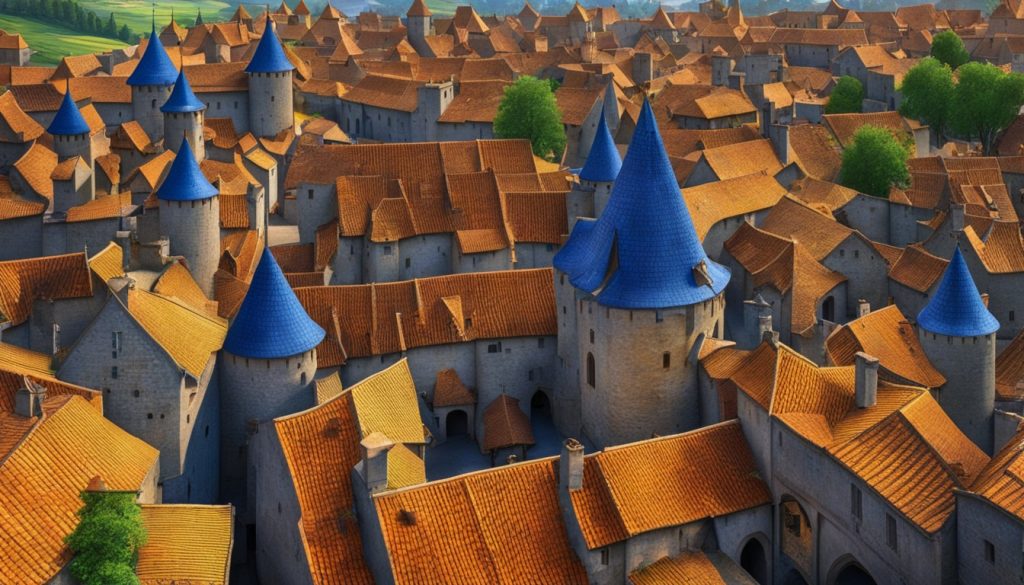
Another significant advantage is the capability to connect with a global community. Online platforms enable players to challenge opponents from around the world, fostering a broader and more competitive gaming experience. Furthermore, digital versions often include tutorials and guides, helping new players learn the rules and strategies more effectively.
Popular Platforms
Carcassonne is available on numerous digital platforms, making it accessible to a wide audience. Mobile apps for both iOS and Android provide a portable gaming experience, perfect for on-the-go play. Additionally, platforms like Steam and Board Game Arena offer robust online solutions with features like leaderboards and multiplayer modes. By embracing the digital version on these platforms, players can enjoy a seamless and engaging Carcassonne experience, whether solo or against others.
Carcassonne Tournaments and Competitions
Entering Carcassonne tournaments requires a meticulous approach to the game. To secure a competitive edge, it’s essential to immerse oneself in advanced strategies and become familiar with the dynamic environment of competitive play.
Preparing for Tournaments
Effective tournament preparation Carcassonne demands a robust understanding of various tiles and expansions. Dedicated practice sessions, both solo and with other competitive players, can enhance your adaptability and proficiency with different game scenarios. Engaging in local meetups or online matches will afford you the chance to face opponents of varying skill levels, further refining your strategic competencies.
Understanding Competitive Play
Grasping the nuances of competitive play is fundamental to gaining a competitive edge in Carcassonne. It is crucial to familiarise yourself with the rules and common strategies employed in high-stakes environments. Analysing past tournament games, identifying pivotal moves, and understanding how top players navigate tile placement can provide valuable insights to inform your gameplay.
| Preparation Tips | Competitive Play Insights |
|---|---|
| Regular Practice with Expansions | Understanding Opponents’ Strategies |
| Join Local and Online Meetups | Study Past Tournament Games |
| Adaptive Tile Placement Techniques | Responding to High-Stakes Situations |
Conclusion
Mastering Carcassonne is a journey that involves not only learning the rules but also refining your strategy through thoughtful tile placement and adept meeple management. Whether you are a novice or a seasoned enthusiast, the essence of the game remains in the enjoyment of building a mediaeval landscape while outmanoeuvring your opponents. The process of mastery is rewarding, providing a deep sense of accomplishment as you grow more proficient in the intricacies of strategic play.
Exploring the various expansions of Carcassonne further enriches the gaming experience. Each expansion offers new challenges and opportunities, enhancing replayability and keeping the game fresh and engaging. From the additional strategies introduced by the River expansion to the complex dynamics of the Inns & Cathedrals, diversifying your gameplay with these expansions can lead to a more nuanced understanding of the game.
In addition to the physical board game, digital versions of Carcassonne also offer a convenient and accessible way to refine your skills. These platforms not only facilitate quick, streamlined play but also enable connections with a broader community of players globally. Whether you prefer playing in person or online, Carcassonne provides a rich tapestry of strategic depth and enjoyment that can be appreciated at all levels of expertise. Thus, mastering Carcassonne is as much about honing your strategic skills as it is about enjoying the shared experience of this timeless game.
FAQ
Is Carcassonne easy to play?
Yes, Carcassonne is easy to learn, making it accessible for newcomers. The rules are straightforward, and a typical game session can adapt to the experience level of the players.
How long does a game of Carcassonne take?
A standard game of Carcassonne typically takes 30-45 minutes, depending on the number of players and their familiarity with the game. As players become more experienced, gameplay can become more streamlined.
How to play Carcassonne like a pro?
To play Carcassonne like a pro, master the art of efficient tile placement and anticipate your opponents’ moves. Develop tactics to disrupt their strategies while maximizing your own scoring opportunities, and leverage expansions to add complexity.
What is the final scoring in Carcassonne?
The final scoring in Carcassonne includes counting points for all incomplete features, such as roads, cities, and monasteries. Fields and farms also contribute to the final score based on the number of completed cities they touch. Bonus points from specific expansions may also apply.
Is Carcassonne fun for 2 players?
Yes, Carcassonne is enjoyable for 2 players. The game scales well with fewer participants, providing a strategic and engaging experience with more direct competition between the players.
Do you need a car in Carcassonne?
No, you do not need a car in Carcassonne. This question seems to be a misunderstanding, as Carcassonne refers to the board game, which can be played at any convenient location without requiring any transportation.
Do all sides have to match in Carcassonne?
Yes, when placing a tile in Carcassonne, all connected sides must match the features of adjacent tiles. For example, roads must connect to roads, and cities to cities, ensuring a continuous and coherent landscape.






